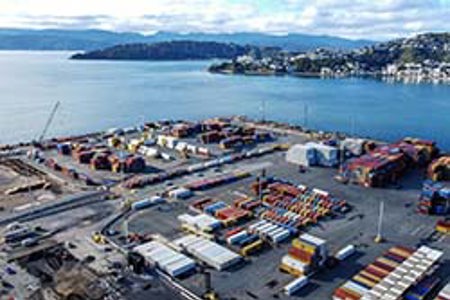
Against the backdrop of economic instability and significant headwinds affecting the ports industry, CentrePort has reported the highest gross revenue in its history, demonstrating the strength of the port’s diversified trade.
Achieving $106.2m in gross revenue, this is $7.6m higher than FY23 and one of several positive results CentrePort has recorded.
“In addition, we have reported a $14.7m underlying NPAT this financial year – an increase of $2.7m on last year. We have also paid $7.5m of dividends to shareholders during the year, another increase of $1.5m,” says CentrePort Board Chair, Lachie Johnstone.
“It’s worth noting that CentrePort’s Comprehensive Income for the year was $34.6m, which includes positive fair value changes only partially offset by the recent tax legislation adjustments, which saw the Government remove tax deductions on industrial and commercial buildings with estimated lives of 50 years or more,” he adds.
He says the port’s focus on an energy transition and biodiversity has seen CentrePort reach a 37% reduction in scope 1 and 2 emissions. This is well ahead of its target of 30% by 2030, achieved despite growing ship and container handling movements.
“Reaching this milestone early means we revised our expectations and we’re now aiming to reach an ambitious goal of 50% reduction by 2030. This would be a significant achievement and position us well to be carbon zero by 2040.”
Chief Executive, Anthony Delaney, says a critical component of CentrePort’s success is the ongoing investment in its people.
“We have a strong focus on health and safety and growing our people’s capability allowing us to maintain a stable workforce. We’re especially proud of our health and safety performance this year as our injury severity and occurrence rates are down 30-70% on the previous year,” Mr Delaney says.
What the port is doing is paying off with a significant reduction in ACC risk-related levies, reduced return to work times and positive feedback from regulators who commended the port for its openness and transparency, he says.
“This doesn’t mean we will lose focus, however, as we will need to continuously concentrate on ensuring our people’s safety and aiming higher.
“CentrePort has been named Oceania’s most efficient container port by the World Bank’s Container Port Performance Index. We have an average gross crane rate of 30.01, which makes us very competitive in the market, particularly for a port of our size.”
Mr Delaney says the economic headwinds have affected some parts of CentrePort’s business, in particular logs, fuel and car imports. While cruise ship visits and passenger numbers were up on FY23, there is a known industry-wide drop for the coming year.
“Our approach will be to continue to focus on what we can control – reducing waste, improving efficiency and being proactive in looking for opportunities and solutions to our customers’ problems.”
Mr Johnstone adds that as the shipping industry looks to find a new normal, CentrePort is focusing on investing in its future: “We’re aware that the year ahead will not be easy for us or our customers and communities, but we know our people will rise to the challenge and demonstrate our ongoing resilience.”










